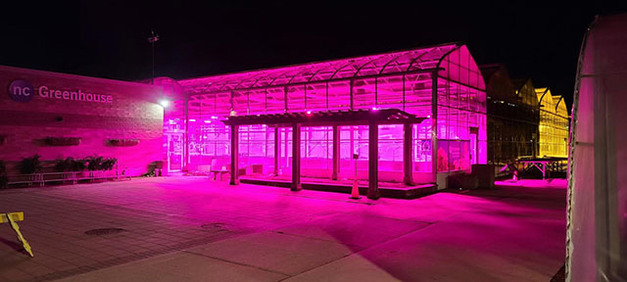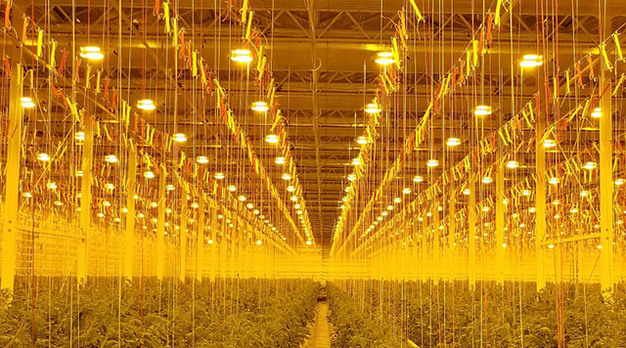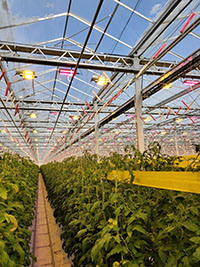"The mismanagement of power in Ontario is a decades-long saga that continues to plague households and businesses alike. In short, collective poor planning and lack of adequate speculation by the provincial government, bureaucrats and municipal utilities providers have created a system in which the province generates more power than it needs," says CeeGreen Owner Peter Hendriksen. He explains how the production is approximately 26,000 megawatts. "However, only about 21,000 megawatts is actually used. Furthermore, Ontario does not have the grid infrastructure necessary to distribute the volume where it is wanted." The result: Ontarians pay some of the highest electricity bills in the country.

According to Peter, there are opportunities to get more out of energy investments at a lower cost. "This is allowing some greenhouse growers in Ontario to finally see the light at the end of a long, frustrating and expensive tunnel," he says. How? "They are tapping into the growing network of consultants in energy and horticulture who are partnering to enhance the value of every cent greenhouse growers pay for energy. All while maintaining, or increasing, yields."
The high price of greenhouse growing in Ontario.
In order to understand the situation, Peter guides us through the history of the Ontario energy system. "Compounding the challenge for greenhouse growers in Ontario is that previous governments did not take the greenhouse industry seriously when developing the provincial power sector. Instead, they focused efforts on the automotive and pulp/paper industries. And we all know what happened there. Saddled with more power than needed and no efficient way to distribute it, the province sent surplus power to the United States. Simultaneously, some Ontario greenhouse growers skipped town to build their businesses in Michigan and Ohio to avoid high energy costs."
Now the greenhouse industry is on the rise, but the grid capacity is inadequate for the need. "I can say on behalf of some of my clients that they would happily partake of the “spare” 5,000 megawatts of Ontario-produced energy kicking around," Peter laughs. "Particularly in rapid-growth markets like Leamington, where I’ve seen my clients build their own CHP or Co-Gen power generation systems at great cost and effort in order to gain independence from the provincial system."

Bureaucracy layers
Though an industry cannot fix the energy problem in Ontario, there are opportunities in the layers of bureaucracy, policy and pricing for greenhouse growers to get the most value out of every watt or gigajoule, Peter says. "It just takes a fresh set of eyes to see the possibilities." He explains how consultants are driven by problem-solving, not utility sales. "You get an arsenal of solutions.”
Currently, there is a budding network of consultants in energy and horticulture who are providing energy management services. "Unaffiliated with a particular product or service, consultants take on the job of navigating through the maze of government programs and initiatives, as well as global adjustments, market fluctuations, infrastructure updates and CO2 tax changes. Though it may seem to us complex and cumbersome, the negotiation, paperwork and programs are their core competence. It may only take a brief consultation, a proposal and a monthly client meeting to reduce power costs," he says.

Energy optimisation
So enough with the talk - it's time to bring up some numbers! Peter talks us through a brief case studies in energy optimisation. He has been active in this market for many years. “I’ve been working with one thing in mind since 1988: giving clients more for less. You can always do better.”
Peter shares how, with the current push towards energy-saving technologies, consultants help greenhouse growers understand how to best invest in their infrastructure. "Consider LEDs. On one hand, they deliver up to 100,000 hours of light in virtually unlimited formats. Capital costs are high, but there is promise of savings over their long lifetime. They are also excellent for growing greens."
"On the other hand, LEDs are at least 10 years away from having any industry standards regarding quality, delivery and service. The current industry standard, high-pressure sodium lights, offer “only” 15,000-20,000 hours of light before bulb replacement, but their performance is much more predictable. And, their capital cost is at least 50% to 75% lower than LEDs for the same crop performance output.
"Under pressure to save on energy and influenced by the marketing of the many new LED manufacturers, some greenhouse growers are investing in the technology with little understanding of the ROI. Consultants however, can provide a deeper understanding of the investment and holistic solutions."
"Today, there are more opportunities to get more out of your energy investments at a lower cost," Pete summarises and adds how, thanks to over 30 years experience in the North American horticulture industry, CeeGreen can introduce you to systems and consulting services that solve specific grower energy issues. "Providing benefits like cost-avoidance efficiencies and energy cost savings. Thought the days of two cents per kilowatt are long gone? Think again."

 Ceegreen
Ceegreen